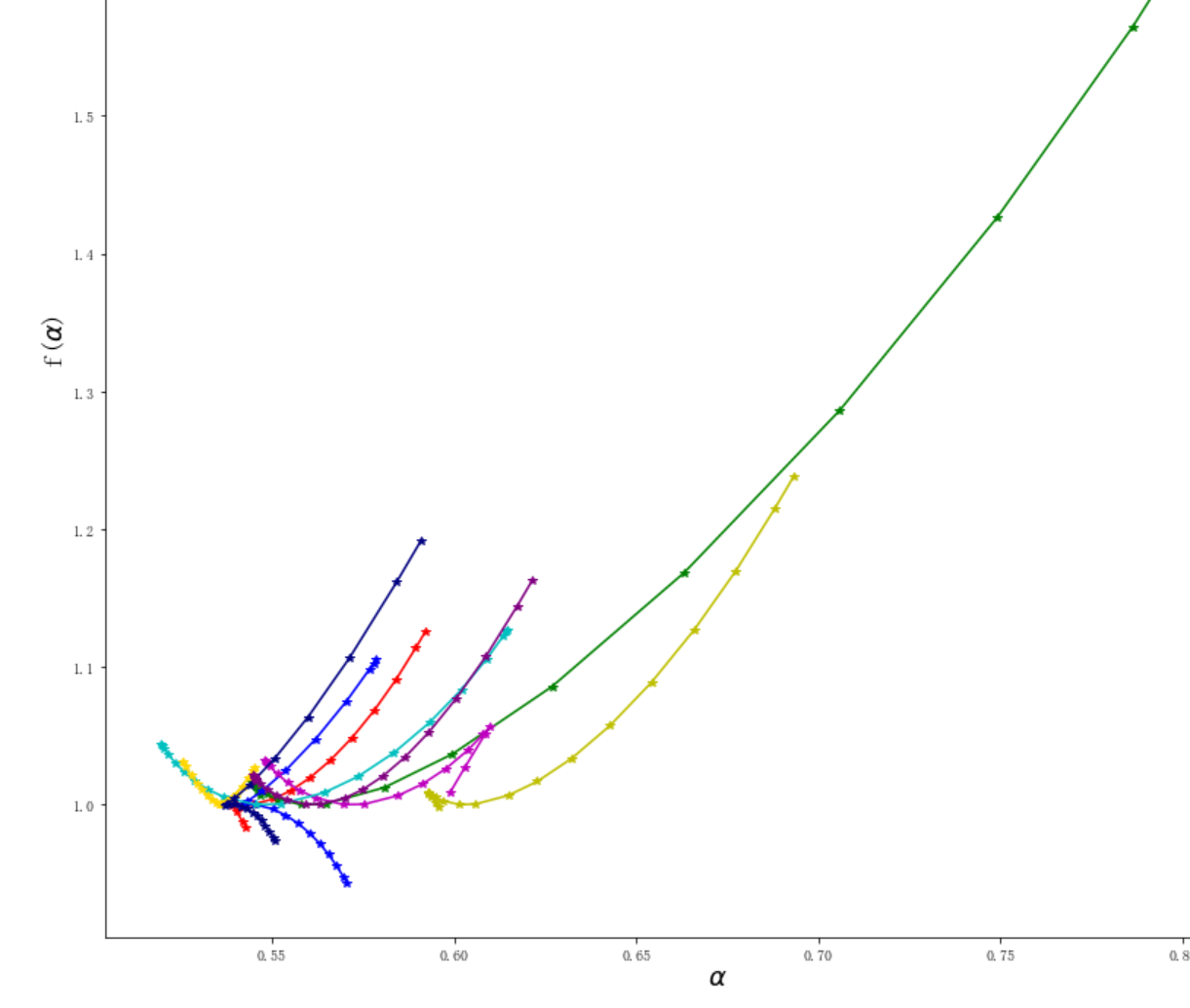Hey @mikemelon that is indeed strange. You are absolutely correct in your observation. H(q) should be a constant or decreasing function of q, mathematically. But it is not so unusual that in real-world data this is not the case. Could you show me how you define q and how you get these plots out?
Cheers!


Include a Singularity spectrum code to understand the strength of the multifractality of the timeseries:
This is found in: Multifractal detrended fluctuation analysis of nonstationary time series, or for example on the Matlab code and paper: Introduction to multifractal detrended fluctuation analysis in Matlab